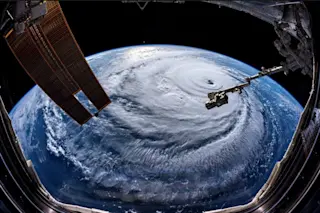Typhoons are becoming more destructive at northern latitudes, according to the first long-term study to document how the storms in East Asia are drifting toward the poles. As climate change expands the tropics and warms sea surface temperatures, those conditions are triggering cyclones to form further north, scientists say. That means devastating typhoons will increasingly threaten cities and towns once at the edge of the storms’ influence.
“These areas are more sensitive to typhoon impacts because of a lack of experience-based adaptation strategies,” said Jan Altman, a forest dynamics expert at the Czech Academy of Sciences in Pruhonice, who led the new research.
Tropical cyclones go by different names depending on their location. In the Atlantic Ocean, they’re called hurricanes, whereas typhoons are cyclones that develop in the northwestern Pacific Ocean. Wherever they form, cyclones typically spin storm systems with strong winds and spiraling thunderstorms. And when they make landfall, ...














